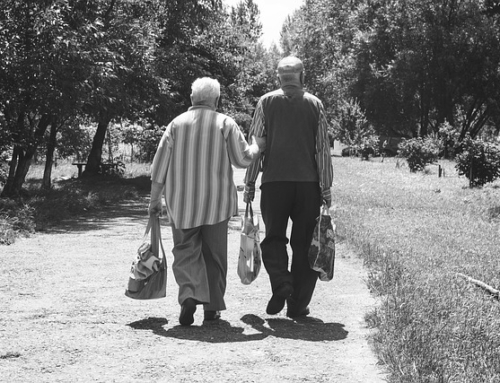by Eddie Pipkin

Image by Clker-Free-Vector-Images from Pixabay
I was reminded this week of the power that connections can have for older people and the capacity we have to facilitate those connections. I was reminded of these things because of an article I had read (of course), but then I had a personal illustration of this principle at a wedding I attended. I, myself, missed an opportunity to make a deeper connection happen. It was within my power to creatively connect two generations in what would have been a fun memory. But I missed it. It turns out that, even for those of us who read about and think about these issues all the time, there can be a gap between what we know intellectually to be best practices and what ways we live out (or don’t) our principles.
Jancee Dunn recently interviewed 86-year-old Swedish author Margareta Magnusson (whose previous book title you may remember, because it was truly memorable: The Gentle Art of Swedish Death Cleaning, which was a guide to clear out all our accumulated crap before our loved ones are left with the chore of sorting through it after we’re gone). Magnusson has a new book out, called The Swedish Art of Aging Exuberantly: Life Wisdom from Some Who Will (Probably) Die Before You.
The Nordic octogenarian, who approaches these issues of aging well with an engaging sardonic wit, identifies three keys to aging with exuberance. One is embracing the principles of the Swedish phrase, kart besvar, which links the concepts of “cherished” and “pain.” This means practicing gratitude when experiencing unpleasant moments: using unwelcome chores, plot twists, and physical infirmities as a reminder of all the things for which we should be grateful (a time-honored spiritual practice). Secondly, is another familiar spiritual strategy, not limited to the aged, but perhaps even more critical as our world narrows in meaningful ways: saying “yes” whenever possible. Opening ourselves to opportunities to learn new things and experience new things keeps us young at heart. It is the third of Magnusson’s suggestions which really caught my attention, however: the benefits of old people hanging out with young people:
This is Magnussen’s simple definition of happiness: being around young people. Not only do they supply fresh ideas and perspectives, she said, but hearing about their plans and prospects “is a way to stay in tune with the young person you yourself were at some point.”
Spending time with younger people can also benefit your brain, said Vonetta Dotson, a professor of psychology and gerontology at Georgia State University and author of “Keep Your Wits About You: The Science of Brain Maintenance as You Age.”
She goes on to explain the ways in which scientists who study cognitive decline point to interactions with younger brains as one of the ways that older brains can stay fit.
She then makes a statement that ministry leaders should write in giant block letters for all to see on the white boards of their leadership strategy development rooms:
Yet this blending of generations often doesn’t happen, Becca Levy, professor of epidemiology at the Yale School of Public Health and author of “Breaking The Age Code,” said. “Because, unfortunately, there’s quite a bit of age segregation in our culture.”
Our first reflex as ministry leaders will be to proclaim, “Aha, the church is a bulwark against this kind of segregation. The church is one of the last places where the generations gather together!” It is. But is it really? Consider the ways in which we physically inhabit our ministry spaces:
- Is it possible for the different generations to be in the same room together but not really be interacting in meaningful ways?
- Do we have very hard lines drawn between activities that are for various age groups?
- Is the segregation of age groups literally demarked by designation of ministry spaces on our campus (Youth Rooms, Senior Sunday School Rooms, Children’s Ministry exclusive areas, etc.)?
- Do our leadership gatherings reflect an implied stratification of who gets to offer ideas and make decisions?
- Do we practice intentionality about getting generational groups to interact with one another, conversationally, relationally, practically?
Different generational groups can be aggressively protective of their spaces. One of the things we could do to encourage interactions would be to intentionally schedule overlap in who uses our special spaces. I’m not arguing for doing away with specially designated spaces altogether. It’s important for identity purposes for groups like Youth and Seniors to feel like they have a home. But what I’m arguing for is to mix it up, so that everyone feels invited to all spaces and feels permission to intermingle within those spaces.
We can work with each of these groups to avoid the common practice of thinking about themselves as some exclusive enclave with territory to protect. That kind of thinking leads, instead of promoting interaction, to groups viewing one another as adversaries! What if instead, we prompt groups to invite other generational groups to participate in their activities?
What if we designed more events and activities as opportunities for generational interaction?
The key is whether or not the interaction is meaningful and relational. If we host any large community-facing event (like a Trunk-or-Treat or a Christmas program), we can call it multi-generational because everybody is welcome – and we often do categorize these large events as evidence of our desire to combine the generations. But these events can still feature one generation doing all the meaningful stuff while the other generation hovers on the sidelines. We need to mix it up!
Such mixing produces powerful relational results for both young and old.
I wrote in the introductory paragraph about missing an opportunity to promote just such interaction. The occasion involved my own mother at my daughter’s wedding. My mother, herself an octogenarian, facing various health issues that limit her mobility, and dealing with the frustrations of not being able to flit about with the fun-loving physicality that was her hallmark for eight decades, was seated at the reception table. Once the dance floor opened, and the party moved en masse to that part of the room, she remained in her dinner chair, isolated. She was having a good time watching the fun, and many people made a concerted effort to go and sit with her for a song or two, engaging her in conversation. But what occurred to me only afterwards is that I should have made a point of helping her into her wheelchair and wheeling her out onto the dance floor for some roll-a-dancing with the crowd (many of whom were young people) – not just a spectator from a distance, but, at least for a few songs, an active participant.
That would have required some extra insight and effort on my part. It would have required some adjustments from the folks on the dance floor. It would have required a willingness to try something new from my mom. All those things were doable and would have had positive outcomes. All of those things would have taken a great night and made it even better. It definitely would have provided everyone with a unique memory and an unexpected connection.
These are the kinds of things we can be doing in our ministry spaces.
Deeper relational connections require a little extra insight and a little extra work, but the results are worth the effort.
We can also put an emphasis on teaching our valued Seniors techniques for dealing with the challenges of aging and leaning into the benefits of their earned status as elders. We can provide them with many opportunities to say “yes.” If we get good at this, it can be a portal to community engagement. It’s a wonderful, obvious ministry gateway.
How is your local congregation or ministry family doing at promoting generational connections? Is there a good rapport between your Youth Ministries, Children’s Ministries, and Senior Ministries? Are you intentional about these relationships, about providing opportunities to say “yes,” and about creating spaces, events, and programs to mix it up with different age groups in meaningful ways? Share your stories.







Leave A Comment